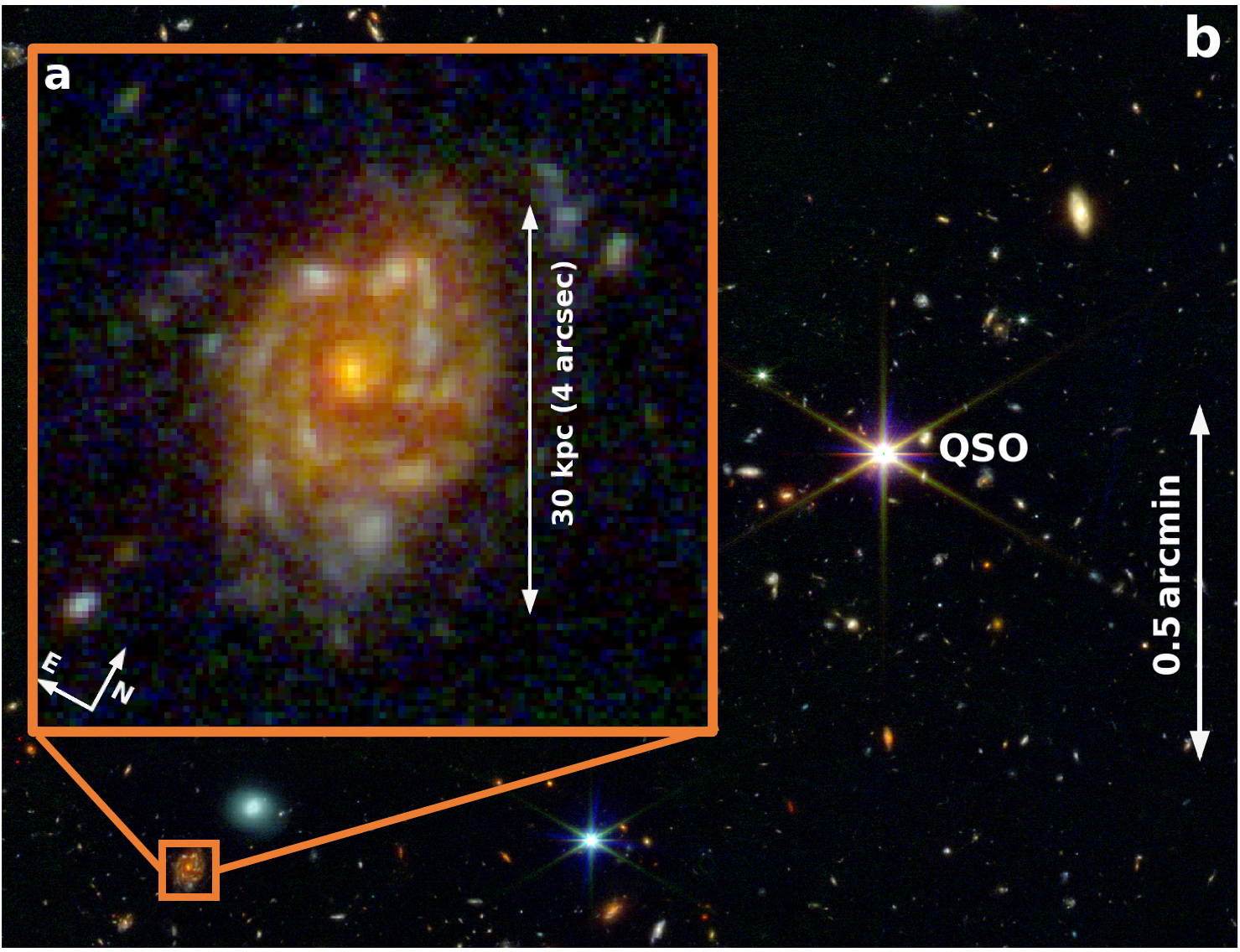Spiral galaxies come in all sizes. One of the more impressive things about them is that over 6 orders of magnitude they are self-similar. Meaning that unless you had an inkling of the distance, all disk galaxies are exponential declining light profiles, rotate with similar (enough) rotation curves and basically look the same.
But up to a point right? There is such a thing as too big a disk galaxy. Extremes can be very informative in an observational science so what are the biggest disk galaxies at a particular time in galaxy evolution?
Locally the biggest disk galaxy title is held by “Rubin’s Galaxy” (UGC 2885), named after Vera Rubin. This is one I studied together with my collaborators extensively (some of the papers were going to come out in 2020…). The amazing thing about this galaxy is that despite that it is 10x the mass and 5x the size of the Milky Way, it neatly lies on all the scaling relations for disk galaxies! It’s an Sc galaxy…just…really big.

And there is a class of big spiral galaxies called “super-spirals” of about the same size and mass (log(M*) ~11.5). Those are often quite perturbed looking and are assumed to be the result of a merger where the disk miraculously survived.
This brings me to the paper this week:
A Giant Disk Galaxy Two Billion Years After The Big Bang
[astro-ph]
This guy: the Big Wheel Galaxy at z=3:

A big disk like that at high redshift is a prime target to see if disks rotate still the same in this much earlier epoch. So the authors targeted this disk with three slit observations for rotation. And indeed there it is; rotating pretty much like a local galaxy.

With distances, morphology, and now kinematics from HII regions (just as V. Rubin found her rotation curves in the 1970’s), this galaxy can directly be compared to the scaling relations in the local Universe.

And while it lies in the same mass-range as Rubin’s Galaxy or the super-spirals from Ogle+ 2015,2019 and Di Teodoro, it looks like a normal disk galaxy in most measures for a z=3 galaxy (star-formation rate) but it is much more extended for its mass than z=3 galaxies.
I wonder how Big Wheel (Tori Amos fan, the authors?) will evolve. Will it become an LSB giant? Something like Rubin’s Galaxy? Or will a disk not survive the 10 Billion years of further evolution?
To become Rubin’s galaxy, star-formation would have to crash, a drop of about 2 orders of magnitude. Other than that, it has a similar rotation velocity and stellar mass! And frankly, a very similar morphology (4 arms, Sc galaxy. Even our view of it (inclined) is similar.








